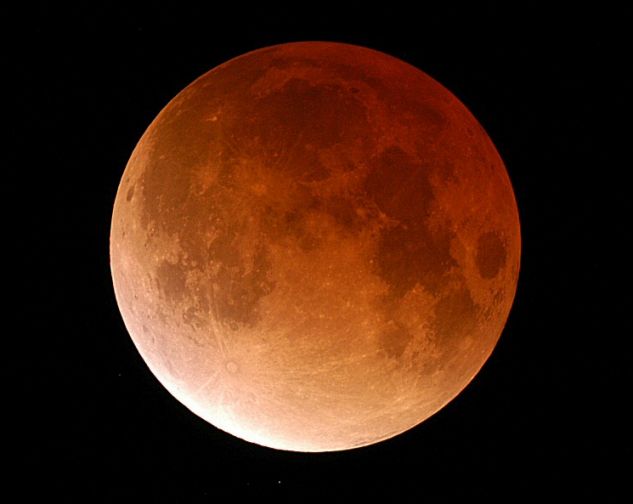Credit & Copyright: Markus Strassfeld
Explanation:
November's lunar eclipse
was one of the shortest in recent
years and also one of the brightest --
demonstrating that the Earth's shadow is not completely dark.
The eclipsed Moon remained easily visible during totality,
reflecting reddened light filtering on to its surface
from all the sunsets
and sunrises,
as seen from the
lunar perspective,
around the edges of a silhouetted Earth.
Hoping to view the
celestial shadow play from the
Earth's night side near Cologne, Germany, about
400,000
kilometers from the lunar surface,
amateur astronomer
Markus Strassfeld packed a digital camera
and telescope and drove about 10 kilometers outside the city
to escape the bright city lights.
Fortunately, the sky cleared about an hour before the
eclipse began and he was able to record this sharp image of
sunsets illuminating the totally eclipsed Moon.
Young ray crater Tycho,
about 85 kilometers across, stands out near
the Moon's brighter southern edge.
1999 2000 2001 2002 2003 2004 2005 2006 2007 2008 2009 2010 2011 2012 2013 2014 2015 2016 2017 2018 2019 2020 2021 2022 2023 2024 2025 |
Yanvar' Fevral' Mart Aprel' Mai Iyun' Iyul' Avgust Sentyabr' Oktyabr' Noyabr' Dekabr' |
NASA Web Site Statements, Warnings, and Disclaimers
NASA Official: Jay Norris. Specific rights apply.
A service of: LHEA at NASA / GSFC
& Michigan Tech. U.
|
Publikacii s klyuchevymi slovami:
total lunar eclipse - polnoe zatmenie - lunnoe zatmenie
Publikacii so slovami: total lunar eclipse - polnoe zatmenie - lunnoe zatmenie | |
Sm. takzhe:
Vse publikacii na tu zhe temu >> | |
